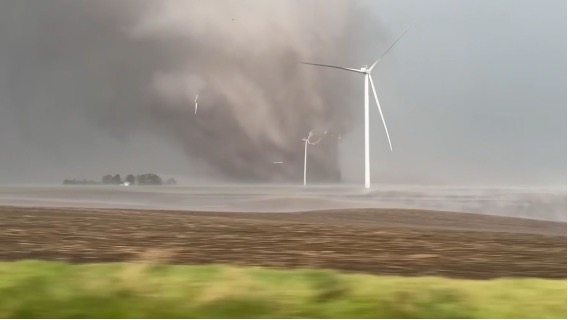Ceit researches more resilient wind components to the challenges of climate change

18 | 12 | 2024
The technology center is developing advanced solutions to improve the reliability of wind turbines in extreme winds at framework of project MEEVCE II.
Climate change has transformed the operating conditions of wind turbines, subjecting them to extreme weather events that compromise their operation and useful life. Current designs, based on wind history, do not contemplate the increase in frequency and intensity of these phenomena, generating uncertainty as to whether the safety factors are sufficient to guarantee the resilience of wind turbines.
In response to this problem, Ceit participates in the project MEEVCEII, whose goal is to develop knowledge and technology to design wind turbine components capable of withstanding these new conditions. This effort not only seeks to improve the reliability of wind turbines through design, but also to strengthen the competitiveness of the Basque wind power industry in an increasingly demanding global environment.
Towards more robust and sustainable wind turbines
The project addresses three main degradation mechanisms in wind turbine components:
- Wear: A common phenomenon that, although not catastrophic, significantly affects turbine performance, modifying, for example, the aerodynamic behavior of the blades or the ability of the gears to transmit power.
- Crack initiation and propagation: Analyzed by fracture mechanics, this process can compromise the structural integrity of components core topic such as the shaft or bearings.
- Breakage of internal bearing elements: Failure of moving components inside the bearing can result in serious operational problems, such as collapse of the pitch rotational movement.
Ceit will work on the design of the rotor shaft
Focusing on these degradation mechanisms, the project will address all components core topic of the wind turbine, such as the blades, the pitch bearing, the gearbox and the shaft. The technology center Ceit will focus on the latter by leading the analysis of the degradation of the rotor shaft, a critical component in power transmission. The research focuses on two aspects core topic:
- Fracture mechanics: Ceit studies the initiation and propagation of cracks on the shaft surface, a phenomenon that can compromise the structural integrity of the component.
- Material fatigue: Advanced models are being developed to predict shaft life by integrating data of steel microstructure and loading history, including extreme wind overloads.
In addition, to respond to the problems in the different components of the wind turbine, technologies will be developed such as validation tests of laboratory to obtain accurate data on the degradation of the components, digital twins to simulate the behavior of degraded components or holistic models of the turbine to analyze the behavior of degraded components.
The project, financed by the Elkartek program of the Basque Government, has a duration of two years (2024-2025) and brings together a consortium led by Ikerlan, with the participation of Bearinn, Bearinn, Mondragon Unibertsitatea and the Energy Cluster. CeitBearinn, Bearinn, Mondragon Unibertsitatea and the Energy Cluster.




